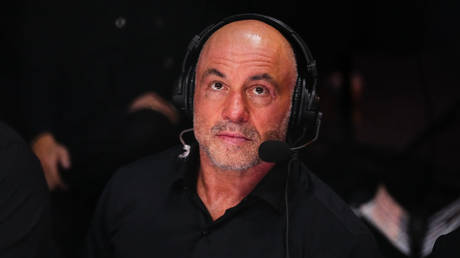LSU football’s playoff hopes took a massive hit on Saturday when the Tigers suffered their second loss of the year, falling 31-24 at Vanderbilt.
LSU got on the board first. The Tigers began the game with the ball and picked up a few first downs, but the drive stalled and LSU settled for three.
Then the Diego Pavia show began. Vanderbilt marched down the field and scored a touchdown, taking a 7-3 lead. That marked the start of a long day for the LSU offense. After LSU responded with a touchdown of its own to make it 10-7, Vanderbilt ripped off a 14-play drive that spanned nearly nine minutes.
The Tigers and Commodores traded field goals just before the half and Vandy took a 17-13 lead into the locker room.
Vanderbilt got the ball to start the third and went right down the field again, taking a two-possession lead. Pavia wasn’t the only QB making highlight reel plays — LSU QB Garrett Nussmeier answered with a 62-yard touchdown to Zavion Thomas.
But stops were hard to come by, and Vanderbilt found the end zone again.
The deficit was too much for LSU to overcome. It was a fine day for the LSU offense, but the Tigers didn’t make the clutch plays late. LSU got the ball with a chance to tie it twice in the fourth quarter. On both occasions, LSU went three and out and punted.
Here are five takeaways from LSU’s loss.
1. LSU’s defense falters
LSU’s defense played its worst game of the year. Saturday’s effort was something closer to 2023’s lackluster unit — not the 2025 LSU defense that ranked No. 4 in SP+ entering the week.
It wasn’t hard to guess Vanderbilt’s plan of attack. Vanderbilt knew LSU was strong on the outside at cornerback and the Commodores rarely threw out there. Vandy wide receivers caught just three passes.
This game was won between the hashes. Pavia repeatedly found his tight ends for first downs. Cole Spence and Eli Stowers combined for eight catches on 10 targets, totaling 88 yards. Those aren’t crazy numbers, but most of that production came in key spots. According to GameOnPaper, Spence’s five targets combined to add 24% to Vanderbilt’s win probability. He made high-leverage plays when they were needed.
Vanderbilt didn’t kill LSU with designed runs, but LSU had no answer for Pavia as a scrambler. The Vandy QB finished with 16 carries for 94 yards and two scores.
Vanderbilt finished the game with a 49% success rate while averaging six yards per play. Vanderbilt was good on late downs too, converting six third downs and two fourth downs.
On a day where LSU’s offense had its best outing of the year, the defense played its worst.
2. LSU’s offense can’t find clutch plays late
Overall, it was a good day for the LSU offense, and we’ll get to that later, but the unit had chances to make it a game late and came up short.
Vanderbilt’s punter didn’t see the field for the first three quarters, but LSU forced two punts in the fourth. The Tigers’ offense took the field needing a touchdown to tie twice and produced two three-and-outs.
A sack marred the first of the chances. Vandy applied pressure all game long, but finally hit home for a loss of ten. That put LSU in second-and-20. A four-yard run set up third and 16, but a holding call made it third and 26. LSU was content to hand it off and play for the punt.
LSU’s next offensive drive started with a screen pass getting blown up in the backfield for a loss of three. Two plays later, on third and eight, Nussmeier delivered a pass under pressure to Barion Brown, but the LSU receiver dropped a would-be first down.
LSU punted again and didn’t get the ball back.
The LSU offense didn’t get much help from the defense on Saturday, but when LSU needed its offense to win the game late, the unit reverted back to the bad habits we saw over the season’s first six games.
3. LSU’s offense was explosive
Now, some of the good. LSU’s offense was efficient. The Tigers averaged 6.6 yards per play, 11.8 yards per completion, and 4.8 yards per carry. Nussmeier completed 68% of his passes for 225 yards without turning it over. It was another productive day for tight end Trey’Dez Green, who caught five passes for 74 yards.
The highlight of the day was a 62-yard Zavion Thomas touchdown. Nussmeier worked some magic, escaping pressure. He found Thomas and the LSU receiver made several Vanderbilt defenders miss and broke free for six. It was the type of playmaking LSU’s been waiting to see from its wide receivers this year.
LSU finished the day with 0.26 EPA/play, which ranks in the 89th percentile. LSU was balanced with its EPA/dropback and EPA/rush ranking in the 70th percentile or better. LSU only ran 49 plays, but totaled seven explosive plays.
4. LSU missed linebacker Whit Weeks
LSU was without its defensive leader, veteran linebacker Whit Weeks. LSU remained talented at linebacker, but it’s clear LSU missed Weeks’ all-around playmaking.
With Weeks out, more was asked of Harold Perkins, who struggled throughout the day. Vanderbilt took advantage of Perkins’ aggressiveness and he was a non-factor. Perkins finished the day with four tackles — but didn’t record a sack or a tackle for a loss.
Dahvon Keys, who got the start with Whit Weeks out, had a QB hurry but was also naught in the sacks and tackles for loss category. LSU would have created a few more negative plays with Whit Weeks on the field. Would it have been enough to win? Maybe not. But Weeks’ absence impacted the game.
5. LSU’s playoff hopes are dire
To make the playoffs, LSU needs to run the table. The Tigers will probably have a hard time getting in at 9-3.
The back half of LSU’s schedule is daunting. LSU’s next two opponents, Texas A&M and Alabama, are both ranked in the top 10 and LSU will finish the regular season with a game at Oklahoma. It’s hard to see LSU winning just two of those games right now — much less three.
LSU entered 2025 with high hopes. This was supposed to be the most talented roster of the Brian Kelly era, but it looks like LSU is destined to miss the College Football Playoff.
This article originally appeared on LSU Wire: 5 takeaways from LSU football’s revealing loss at Vanderbilt





